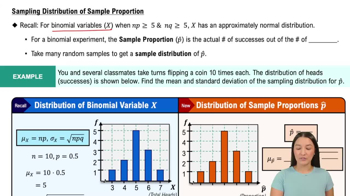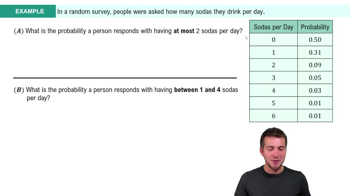Which of the following is NOT quantitative data?
Table of contents
- 1. Intro to Stats and Collecting Data1h 14m
- 2. Describing Data with Tables and Graphs1h 55m
- 3. Describing Data Numerically2h 5m
- 4. Probability2h 16m
- 5. Binomial Distribution & Discrete Random Variables3h 6m
- 6. Normal Distribution and Continuous Random Variables2h 11m
- 7. Sampling Distributions & Confidence Intervals: Mean3h 23m
- Sampling Distribution of the Sample Mean and Central Limit Theorem19m
- Distribution of Sample Mean - Excel23m
- Introduction to Confidence Intervals15m
- Confidence Intervals for Population Mean1h 18m
- Determining the Minimum Sample Size Required12m
- Finding Probabilities and T Critical Values - Excel28m
- Confidence Intervals for Population Means - Excel25m
- 8. Sampling Distributions & Confidence Intervals: Proportion1h 12m
- 9. Hypothesis Testing for One Sample3h 29m
- 10. Hypothesis Testing for Two Samples4h 50m
- Two Proportions1h 13m
- Two Proportions Hypothesis Test - Excel28m
- Two Means - Unknown, Unequal Variance1h 3m
- Two Means - Unknown Variances Hypothesis Test - Excel12m
- Two Means - Unknown, Equal Variance15m
- Two Means - Unknown, Equal Variances Hypothesis Test - Excel9m
- Two Means - Known Variance12m
- Two Means - Sigma Known Hypothesis Test - Excel21m
- Two Means - Matched Pairs (Dependent Samples)42m
- Matched Pairs Hypothesis Test - Excel12m
- 11. Correlation1h 6m
- 12. Regression1h 50m
- 13. Chi-Square Tests & Goodness of Fit1h 57m
- 14. ANOVA1h 57m
1. Intro to Stats and Collecting Data
Intro to Stats
Problem 1.2a
Textbook Question
Reported Versus Measured In a survey of 1046 adults conducted by Bradley Corporation, subjects were asked how often they wash their hands when using a public restroom, and 70% of the respondents said “always.”
a) Identify the sample and the population.
 Verified step by step guidance
Verified step by step guidance1
Identify the population: The population is the entire group that you want to draw conclusions about. In this case, it is all adults who use public restrooms.
Identify the sample: The sample is the subset of the population that is actually observed or surveyed. Here, it is the 1046 adults who participated in the survey conducted by Bradley Corporation.
Understand the relationship: The sample is used to make inferences about the population. The survey results from the sample (1046 adults) are used to estimate the behavior of the entire population of adults.
Consider the representativeness: Evaluate whether the sample is representative of the population. This involves considering how the sample was selected and whether it might be biased.
Reflect on the findings: The survey found that 70% of the sample reported always washing their hands in public restrooms. This statistic is used to infer the handwashing habits of the broader population of adults.
 Verified video answer for a similar problem:
Verified video answer for a similar problem:This video solution was recommended by our tutors as helpful for the problem above
Video duration:
2mPlay a video:
Was this helpful?
Key Concepts
Here are the essential concepts you must grasp in order to answer the question correctly.
Sample
In statistics, a sample refers to a subset of individuals or observations selected from a larger population. The sample is used to make inferences about the population. In this context, the sample consists of the 1046 adults who participated in the survey conducted by Bradley Corporation.
Recommended video:

Sampling Distribution of Sample Proportion
Population
The population in statistics is the entire group of individuals or instances about whom we seek to draw conclusions. It encompasses all possible subjects that fit a particular set of criteria. Here, the population would be all adults who use public restrooms, as the survey aims to understand handwashing behavior in this group.
Recommended video:

Population Standard Deviation Known
Survey Methodology
Survey methodology involves the techniques and principles used to conduct surveys and collect data from respondents. It includes designing the survey, selecting the sample, and analyzing the results. Understanding this concept helps in evaluating the reliability and validity of the survey results, such as the claim that 70% of respondents 'always' wash their hands in public restrooms.
Recommended video:
Guided course

Intro to Random Variables & Probability Distributions Example 1

 2:13m
2:13mWatch next
Master Introduction to Statistics Channel with a bite sized video explanation from Patrick
Start learningRelated Videos
Related Practice
Multiple Choice
